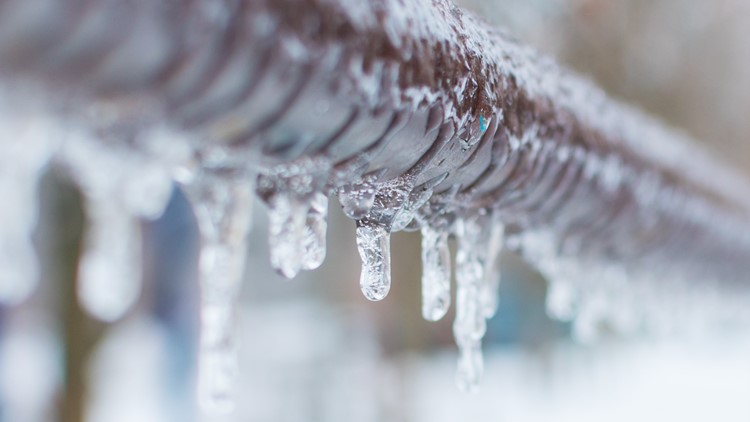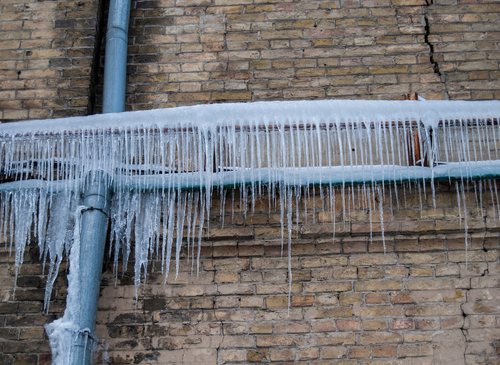Ways to Avoid Frozen Plumbing in Cold Weather: Pro Tips
Ways to Avoid Frozen Plumbing in Cold Weather: Pro Tips
Blog Article
Just about everyone has their own unique opinion when it comes to Prevent Frozen Pipes .

Cold weather can wreak havoc on your plumbing, especially by freezing pipes. Right here's exactly how to avoid it from occurring and what to do if it does.
Introduction
As temperatures decline, the threat of icy pipelines boosts, potentially resulting in costly repairs and water damages. Recognizing exactly how to prevent icy pipes is essential for homeowners in chilly environments.
Recognizing Icy Pipes
What triggers pipelines to freeze?
Pipelines freeze when exposed to temperature levels below 32 ° F (0 ° C) for expanded periods. As water inside the pipelines freezes, it broadens, taxing the pipe wall surfaces and possibly causing them to break.
Risks and damages
Icy pipelines can result in water disruptions, building damage, and expensive repair services. Ruptured pipelines can flooding homes and create extensive structural damage.
Signs of Frozen Pipes
Identifying frozen pipes early can stop them from breaking.
Just how to recognize icy pipes
Search for decreased water circulation from taps, unusual odors or sounds from pipes, and visible frost on revealed pipelines.
Prevention Tips
Shielding prone pipes
Cover pipes in insulation sleeves or use warmth tape to safeguard them from freezing temperature levels. Focus on pipelines in unheated or external areas of the home.
Heating methods
Maintain interior rooms appropriately heated, specifically locations with plumbing. Open up cupboard doors to allow warm air to flow around pipes under sinks.
Shielding Outside Pipes
Garden hose pipes and exterior faucets
Separate and drain garden pipes prior to winter. Install frost-proof spigots or cover outside faucets with protected caps.
What to Do If Your Pipelines Freeze
Immediate activities to take
If you presume icy pipelines, keep faucets available to eliminate stress as the ice melts. Use a hairdryer or towels soaked in warm water to thaw pipelines slowly.
Long-Term Solutions
Structural adjustments
Take into consideration rerouting pipelines away from outside wall surfaces or unheated areas. Include added insulation to attics, cellars, and crawl spaces.
Upgrading insulation
Invest in high-grade insulation for pipelines, attics, and wall surfaces. Proper insulation assists maintain constant temperatures and minimizes the risk of icy pipelines.
Conclusion
Protecting against frozen pipelines requires aggressive measures and quick feedbacks. By understanding the reasons, indicators, and preventive measures, home owners can safeguard their plumbing throughout winter.
5 Ways to Prevent Frozen Pipes
Drain Outdoor Faucets and Disconnect Hoses
First, close the shut-off valve that controls the flow of water in the pipe to your outdoor faucet. Then, head outside to disconnect and drain your hose and open the outdoor faucet to allow the water to completely drain out of the line. Turn off the faucet when done. Finally, head back to the shut-off valve and drain the remaining water inside the pipe into a bucket or container. Additionally, if you have a home irrigation system, you should consider hiring an expert to clear the system of water each year.
Insulate Pipes
One of the best and most cost-effective methods for preventing frozen water pipes is to wrap your pipes with insulation. This is especially important for areas in your home that aren’t exposed to heat, such as an attic. We suggest using foam sleeves, which can typically be found at your local hardware store.
Keep Heat Running at 65
Your pipes are located inside your walls, and the temperature there is much colder than the rest of the house. To prevent your pipes from freezing, The Insurance Information Institute suggests that you keep your home heated to at least 65 degrees, even when traveling. You may want to invest in smart devices that can keep an eye on the temperature in your home while you’re away.
Leave Water Dripping
Moving water — even a small trickle — can prevent ice from forming inside your pipes. When freezing temps are imminent, start a drip of water from all faucets that serve exposed pipes. Leaving a few faucets running will also help relieve pressure inside the pipes and help prevent a rupture if the water inside freezes.
Open Cupboard Doors
Warm your kitchen and bathroom pipes by opening cupboards and vanities. You should also leave your interior doors ajar to help warm air circulate evenly throughout your home.

Hopefully you enjoyed reading our post about Winter Plumbing Precautions: Preventing Frozen Pipes. Thanks a ton for taking time to read through our blog. Do you know another individual who is curious about the topic? Take a moment to promote it. I thank you for reading our article about Helpful Tips to Prevent Frozen Pipes this Winter.
This Post Report this page